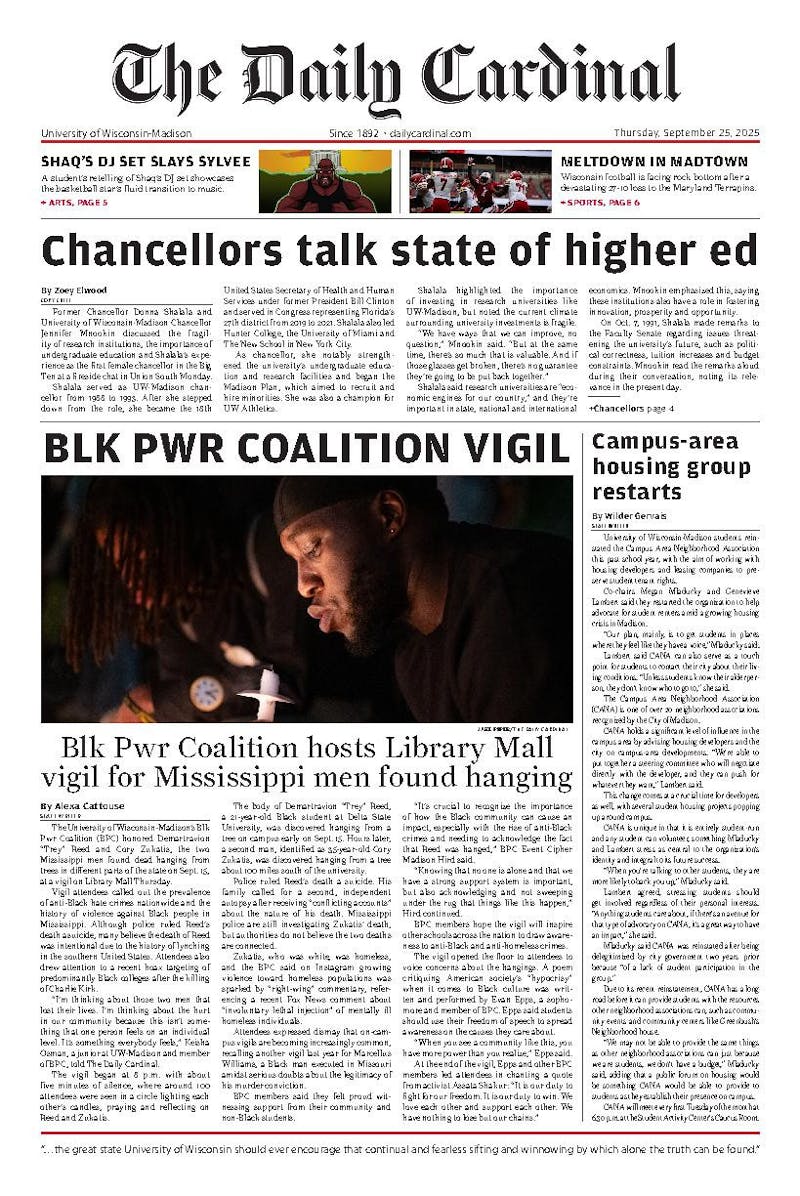""The Texas Chainsaw Massacre: The Beginning"" provides backstory for Leatherface's transformation into the cold-blooded killer he was revealed to the world as in Tobe Hooper's 1974 horror classic, ""The Texas Chainsaw Massacre."" Leatherface suffers the usual abuse from peers and employers, of course. But more than this, the writers highlight his father's (R. Lee Ermey's) desire to capture, torture and kill ""hippie protesters"" passing through the town.
That massacred hippie skins provide his son with a new face is rather secondary. Ermey is practically the main character; Leatherface has comparatively little screen time. The movie, set in 1969, shows their first act of mass murder. It looks an awful lot like the other films.
There's a dim attempt at political relevance here. The two male victims are bound for Vietnam, and their final vacation with their girlfriends bring them (after a horrific accident) to Leatherface's house. One of them secretly plans to flee to Mexico; when Ermey finds his burnt draft card, he teaches him an unsubtle lesson in courage. While '70s slasher films were influenced by post-Vietnam unease, the filmmakers are hardly heirs to those undertones. Anything this movie thinks it's saying about Vietnam (or, implicitly, Iraq) is muted by its ceaseless incompetence.
None should criticize ""TCM: The Beginning"" for not doing something new. The genre it belongs to is one long broken record. But it doesn't even strive toward a campy enjoyability. It's a doggedly nihilistic exercise, depressing when it should be scary. ""TCM: The Beginning"" hates its audience, wants to punish them and will accept nothing besides their uncomfortable, undesired disgust. The effect is a dull, nauseous desensitization, and it's stronger than other recent horror efforts.
It doesn't help that the movie is a technical disaster. The photography is almost apologizing for the material. For an R-rated movie about torture and murder, most of the violence is represented by spraying blood or heavily blurred images, all of which contribute to an annoying delirious feel. Instead of a fully realized Southern atmosphere (""The Skeleton Key"" did a marvelous job with this), the movie presents dimmed photographs of landscapes and ominous music. It's not the same thing. And the editing is so choppy that it's impossible to determine where the victims are in relation to their hunters at any given time.
Movies like this were innovative once, but they're no longer scary by themselves. They now rely on ever-increasing amounts of blood and torture—and they've lost the cinematic muscle to do that effectively. ""TCM: The Beginning,"" like other recent fare, has at least 50 jump scenes. Shouldn't filmmakers know that one or two, placed strategically, can be scarier than a slew of loud noises?
During the '70s, ""Halloween"" and ""Last House on the Left"" represented a bold new style of filmmaking. It became acceptable to juxtapose hard gore with suspense, stylistic rebellion was the norm and some of the best movies of that decade were horror flicks. It was fun to offend in this way, because everyone was in on it. With this film, viewers might have to ask themselves whether they still care to be. It's not a matter of growing up, but of moving on.





